Learn how to spend a cracking two days in Dublin with our inside guide and itinerary. There’s never been a better time to visit Ireland’s capital.
Then, don’t miss this article on quirky and unusual things to do in Dublin here.
Disclosure: if you book or buy through any of the links on this page then we may earn a small commission at no extra cost to you. I’ve travelled to Dublin many (many!) times but occasionally this has been in partnership with Globus Travel or Tourism Ireland. However, as ever, as always, I keep the right to write what I like. There is just no point otherwise!

Your Itinerary for Two Days in Dublin
Dublin is one of Europe’s most enjoyable capital cities. It’s super soaked in history, architecture, folklore and fun and yet it’s small enough to get around without spending half your life underground or gridlocked in traffic.
It’s a city which suits several different personalities, sometimes all within the same two days. As a UNESCO City of Literature, it provides the perfect backdrop for highbrow intellectual musings. And as a party city, well, from Temple Bar to the Guinness Storehouse, you’re never short of company and a sense of good craic.
Two days in Dublin is a good amount of time to plan to enjoy Ireland’s capital. This either works well as a weekend trip from Europe or as the start or finish to a longer itinerary in Ireland.
Why Visit Dublin
Dublin is a fun, characterful city with a poignant past that still influences events today. Its history reaches back to the Vikings, through the 800 years of rule from Westminster and a tumultuous 20th century through the Troubles.
It’s a city with a sense of music and dance, a city of literature, where you can walk (and drink) in the footsteps of James Joyce, Oscar Wilde and Jonathan Swift .
It’s a place to enjoy a pint of the black stuff, to listen to live Irish music and to chat away to friends and strangers alike.
And it’s also a great point to start and finish longer trips around Ireland. Whether that’s taking day trips into the surrounding Wicklow countryside or zipping across the whole country to the Wild Atlantic Way and the Cliffs of Moher.
This 2-day Dublin itinerary takes you to the best places in the city where you can learn more about Irish history, eat like a local, and have a great time. And if you want more? Check out our 8 day Irish itinerary here.
Travel on your own or take a tour?
Ah, this is a really interesting question for Dublin. If you’re just on a short city break and you’ve hopped over from the UK, then you can DIY things fairly easily.
However, if you want to see more of Ireland, then it can actually be a great idea to take a tour. I travelled with Globus on their Ireland group trip and as a result, not only did I make new friends, but I saw plenty of things that I would have missed had I been on my own.
Also, some rural roads in Ireland are steep and tight (and terrifying.) If this is the sort of thing to keep you up at night, then it’s great to have someone who knows the roads well doing the driving for you.
Most tours start and finish in Dublin, with some organised activities and some free time. Globus, for example, took us on a guided tour of the city and then allowed us to choose between different activities as part of their Globus Choices scheme. The group split according to activity: some went to watch Irish cabaret, while I joined the group that headed out on the literary pub crawl (yes, it’s a thing!) The Globus experience also left us with plenty of free time in Dublin and covered an introductory bus tour to help get our bearings in the city.
You can read more about my thoughts of their group Ireland trip here.
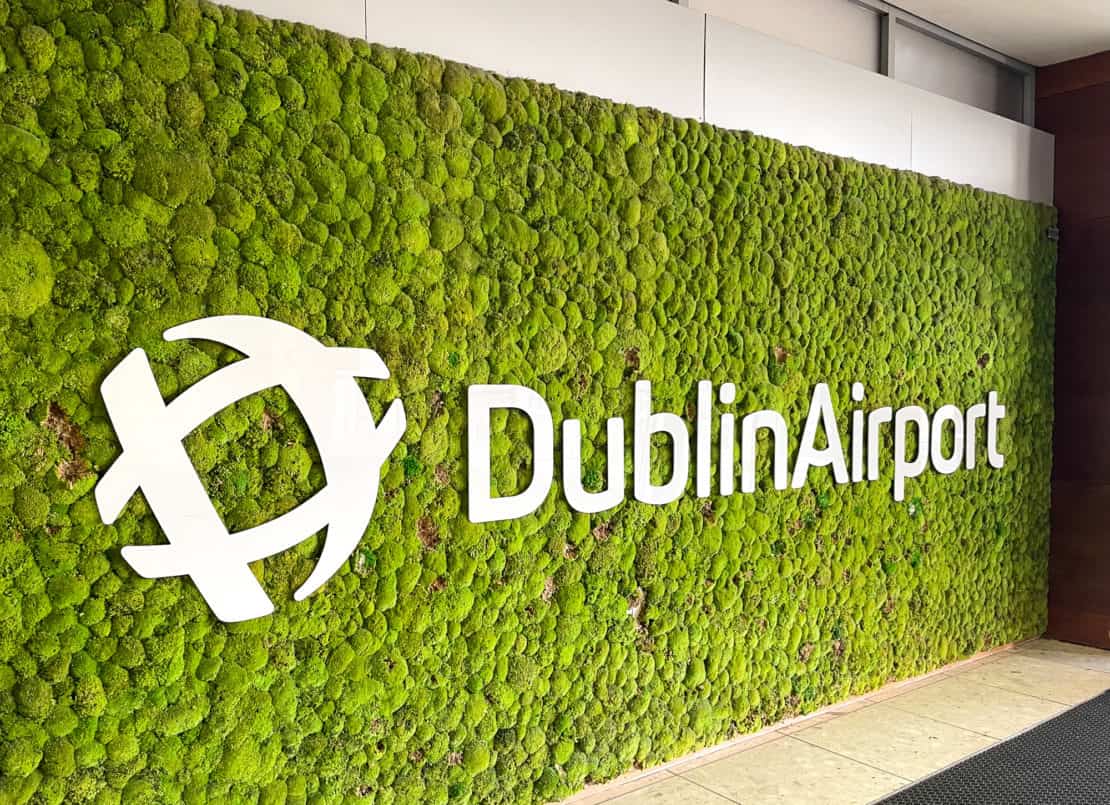
How to Travel to Dublin
With so many people all over the world with Irish connections, it’s no surprise that it’s easy to get to Dublin. The capital city of Ireland is accessible by air, train, and bus. Of course, taking the plane is the fastest and most comfortable option from most places, but if you’re in the UK, don’t rule out the ferry.
Flights
Dublin Airport is located only 10 kilometres from the city centre and receives over 700 flights per day. You’ll find the legacy airlines Like British Airways and Air France, as well as no frills budget carriers. Ryanair is Irish, after all.
Passengers travelling to the US can also pass through immigration in Dublin, subject to a few conditions, to save time when on American soil.
From the airport, it’s relatively straightforward to reach Dublin’s centre. You’ll see taxis lining up in front of the airport, car rental companies on site, and shuttle buses like Bus Éireann or Dublin Bus, which leave every 15 minutes and are in Dublin in half an hour.
Of course, if you book with a tour operator, like Globus, they may well organise a transfer for you.
Trains
If you are taking the train from Cork or Limerick, you will arrive at Heuston Station to the west of the city, whilst trains departing from Northern Ireland stop at Connolly Station to the east.
Trains in Ireland are reasonably fast and comfortable and work well for city hopping. From any of the train stations, you can take the DART rail service or the LUAS tram service to the centre of the city.
Buses
Taking the bus is the cheapest way to get to Dublin, although the least comfortable. The main bus terminal is called Busáras and is placed just a few steps from Connolly Station from where you can use public transportation to get around. Companies like Eurolines and Citylink operate intercontinental buses, but it may be too tiring for a trip to travel by bus from overseas.
Ferries
Ferries run up to four times a day from Holyhead and Liverpool to Dublin and routes also sail from Cherbourg in France. On certain services, you can bring your own car and a lot more luggage than if you flew.
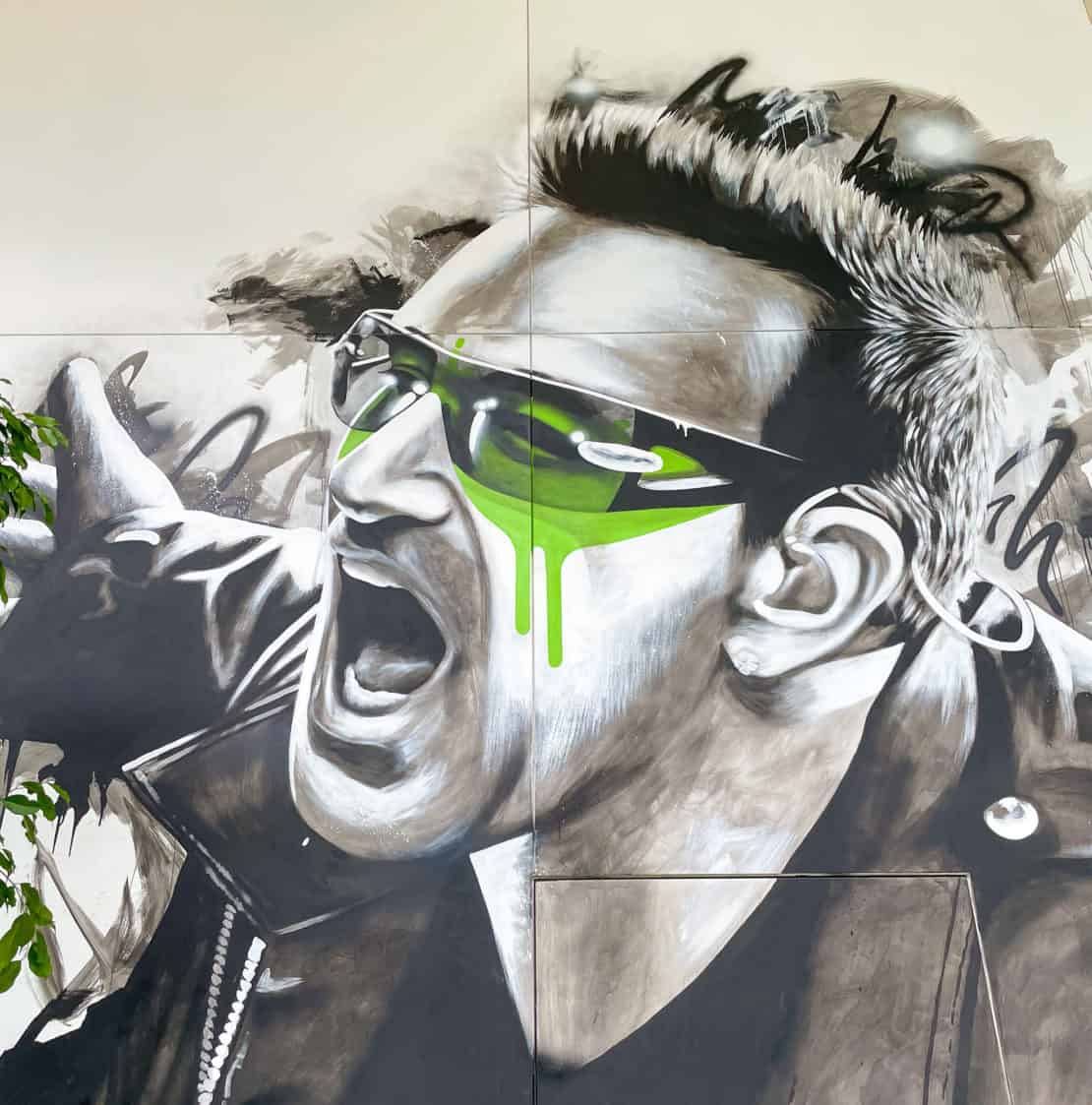
How to Get Around Dublin
The simplest way to get from one major attraction to the next one is to walk, as Dublin is an incredibly walkable city. Yet, if you want to squeeze in as many stops as possible, you may need to use public transport, the occasional taxi or Uber or a bike.
Buses
If you know you will be using public transport a lot, it may be wiser to buy a leap visitor card, which will help you save money and avoid making supplementary stops to buy tickets. You can also buy a Dublin pass which covers transport and access to museums and other attractions. As with most countries, you can pay for it online with your credit card and pick it up when you arrive.
Taxis
Another option is to pick up a taxi or Uber. It is the most comfortable service, but it can easily cost you £20 for a short ride. It is feasible only if you travel in a group or with your family, as it may end up costing you more or roughly the same if you were to buy bus tickets for everyone.
Railway
The DART railway goes from the city’s suburbs to its centre, so it is not too useful during most two day Dublin itineraries. However, as it is built along the seafront, it offers a dashing view, so it may be worth taking it just for the experience.
The cheaper alternative to DART is the LUAS tram service, which also brings commuters to the centre.
Bikes & Scooters
You can also hire a bike or an E-scooter. The first option is perfect if you are taking a self-guided tour of Dublin, as you can reach all the attractions without too many complications. For multiple-day tours, hiring an E-scooter may be a better idea, especially if you still need to improve your stamina.
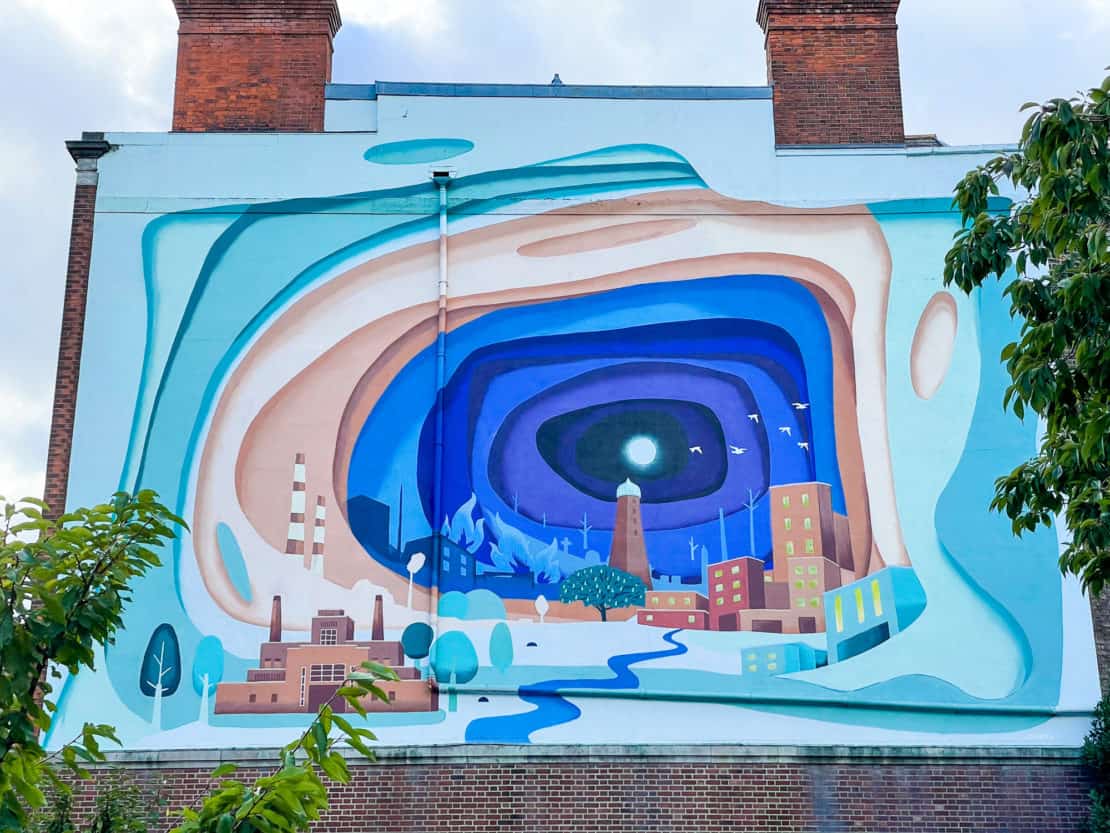
Dublin Itinerary Day 1:
The first day of this Dublin itinerary takes in the classic sites. We start at one of the most important symbols in the Irish fight for independence and end on a more optimistic tone at a castle which houses a gorgeous library.
This 2 day Dublin itinerary is largely aimed at first timers. However, if you’ve been here before, I’ve added some extra suggestions in at the end. Ireland keeps adding new attractions and developing in new ways so there’s always something fresh to see!
The General Post Office
Start the day in the middle of O’Connell Street, right in front of the GPO building. At first glance, you’ll notice an imposing edifice built in the Greek Revival Style with splendid colonnades and a roof reminiscent of the Parthenon in Athens. Yet, the façade is the only original part of the GPO, as the rest of the building was badly damaged during Easter Rising in 1916.
The GPO served as the headquarters for the Irish Volunteers who rebelled against British Rule over Easter in 1916. This pivotal event drew together years of poor treatment and resentment while the British forces were distracted on mainland Europe during World War One.
The Irish Famine
Few events have had such an impact on the history of the country and cast such a long shadow as the Irish Famine, which ran from 1845 to 1849. When potato blight caused the staple crop to fail, millions were left without enough food.
By the end, over one million people had fled the country and a further one million had died of starvation.
Britain sent heavy artillery to end the riot, and many of the revolutionaries were killed in the conflict. The resistance went on for a full six days and historians generally agree that it was the harsh treatment and executions of the ringleaders that grew support for independence from a fringe to mainstream affair.
Inside, you will also find a small museum and a café, which is a great place to have breakfast if you woke up too late and skipped it at your hotel.
O’Connell Street
You are already on Dublin’s most prominent street, so take a few moments to enjoy it further. It is a place almost always buzzing with shoppers or tourists and locals heading to one of the many restaurants and cafes around. Depending on who you ask, the area between O’Connell, Parnell and Henry Street is the best area to shop in Dublin.
Look for The Spire, also known as the Monument of Light, a huge structure measuring 120 metres in height. And if you have a bit of time, take a look at the statues of the political leaders you will find on your way to the next destination.
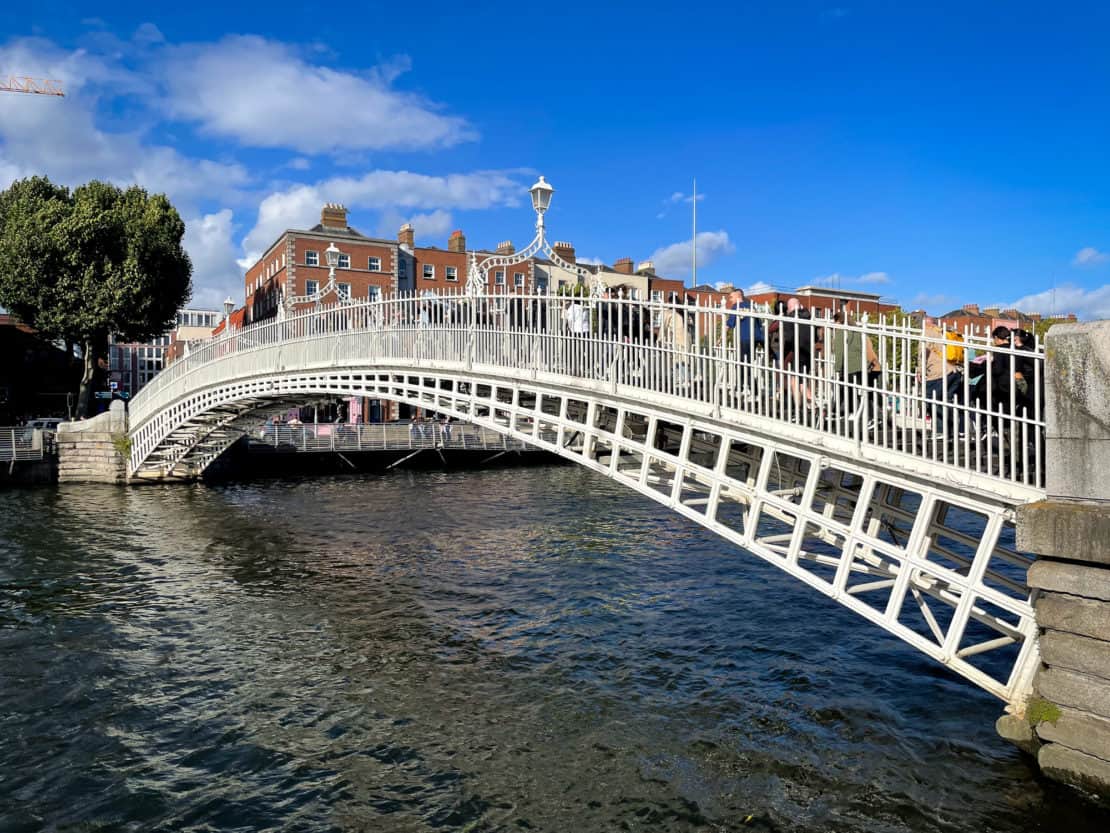
Ha’penny Bridge
Step on the Ha’penny Bridge to cross the River Liffey to the other side of Dublin. This was the first pedestrian bridge to be built over this river, which previously used to be crossed by ferry. When the bridge opened, the toll was half a penny, and that’s where the name comes from.
At that point, only about 450 people could afford to cross the river, but today it is crossed by over 30,000 people, both locals and tourists alike. There’s no longer a fee but there is a gorgeous book shop and cafe on the O’Connell side of the water: the Winding Stair.
College Green
Walk on to cross College Green, a beautiful square edged by some of the most impressive buildings in the city.
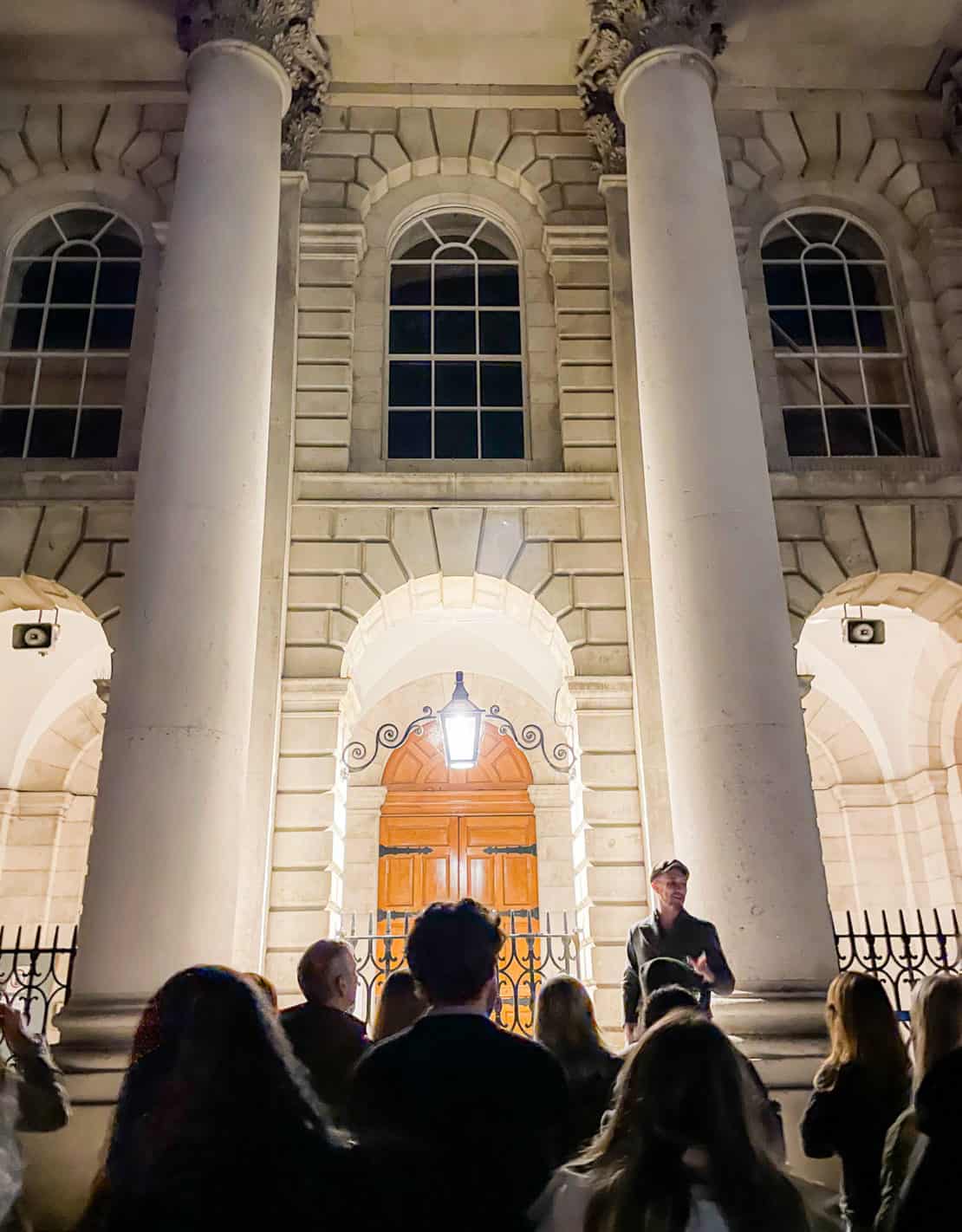
Trinity College
Other than perhaps Guinness, Trinity College is one of Dublin’s most important landmarks. Created in 1592 in the model of Oxford and Cambridge, it housed and educated Oscar Wilde, William Trevor, Jonathan Swift, Thomas Moore, Bram Stoker, Edmund Burke, and 4 Nobel Laureates including Samuel Beckett. So, you know, prepare to be inspired as you walk in their shadowy footsteps.
Trinity also houses the Old Library Building where you will find the world famous Book of Kells. This medieval manuscript is over one thousand years old and shows great craftsmanship in its exquisite illustrations and colours.
Then, there’s the Long Room, a book lover’s paradise with more than 250,000 of Ireland’s oldest books and documents.
Inside tip: to experience life inside the campus, head to Dublin in the summer. When the students are away, the college rents some of the rooms for a great price. The restaurants and cafes within remain open, so you will get access to the fun parts without going through the stress of homework and exams.
The Notorious Molly Malone Statue
It’s just a quick stop, but a rite of passage. Stop to see this statue of a 17th-century Molly Malone, a woman immortalised in the song about selling ‘cockles and mussels, alive, alive, oh!’. She is often represented as a hawker by day and a prostitute by night, although there are some versions of her story in which she is one of the few chaste female hawkers of her time.
National Gallery of Ireland
With a vast permanent collection of European paintings and frequent temporary exhibitions, the National Gallery of Ireland, part of the National Museum of Ireland, offers a great way to get acquainted with some of the biggest names in art. Think Velázquez, Zurbarán, Picasso, Gris, Delacroix, Monet, Caravaggio, Vermeer, and others.
A visit usually takes from 2 to 3 hours to take in all the major works. However, it is possible to breeze through at a faster pace and since entry is free, there’s no guilt attached.
Optional: Royal Hibernian Gallery
Not far from the National Gallery, the gallery of contemporary art in Dublin is a place full of colour with an exceptional artistic vibe. There may not be enough time to squeeze it into a two-day Dublin itinerary, but if this isn’t your first time then it might be one to add to the list. Once again, Ireland wants to make art available to everyone, so admission is free.
The Little Museum of Dublin
One of my favourite places in Ireland’s capital city is this small but very lively museum located on St Stephen’s Green. Those who yawn every time they open a history book will learn a lot about Ireland without getting bored, as the Little Museum of Dublin has a special way of presenting historical events.
Look out for artefacts from Queen Victoria and local Irish band U2.
Optional: St. Stephen’s Green
If you skipped the St Stephen’s Green tour offered by the museum, you can discover this superb Victorian park on your own. Full of flowers and trees, with herbaceous borders that keep it colourful for most of the year and an ornamental lake with a waterfall, it is the perfect spot to take a break – if the sun is shining. If you find yourself there around lunch, you may be able to attend an open-air concert (only during the summer months).
Optional: MOLI – Museum of Literature Ireland
Cross St Stephen’s Green to discover this gem. Literature fans will have a great time inside this museum, which is fully dedicated to Irish writers and literature. Although you may struggle to slot it into your two day Dublin itinerary, it is worth visiting for the many James Joyce documents, which include the ‘Copy No. 1’ of Ulysses.
Dublin Castle
Round out your tour of Dublin’s historic architecture with a visit to Dublin Castle, with its grandiose stone walls and imposing tower. It is situated right in the heart of the city because the city actually grew around it and borrowed its name (Dublin comes from ‘Dub Linn’, meaning Black Pool, a water accumulation point where Rivers Poddle and Liffey met in the old times on the very spot where the castle stands today.)
Historians believe that a Gaelic fort existed here before it became a Viking fortress and then the seat of the English from 1204. From 1922, it was the seat of British rule in Ireland. Today presidential inaugurations are held in the state apartments and the castle also hosts official state visits and exhibitions.
Touring Dublin Castle
You can book a tour to visit the State Apartments and the Chapel Royal or grab one of the brochures available in 17 languages and visit the areas of the castle that are open for self-guided visits.
The Chapel Royal and the Undercroft, where you can see the original walls of the castle, are only available with a guided tour. So, if you’re keen to do that then book in advance to make sure you have a ticket.
If you still have enough energy, take a stroll around the castle’s gardens or grab a coffee at the Terrace Café in the State Apartments. The castle has a nice gift shop as well, so if you want to get something to remind you of Dublin, here you can find some interesting magnets, sculptures, or jewellery. Check out our article on Irish souvenirs here to make sure you choose the right thing!
Lastly, stop by the Chester Beatty Library on the grounds of the castle where you can see a huge collection of European, Middle East, Asian, and African manuscripts.
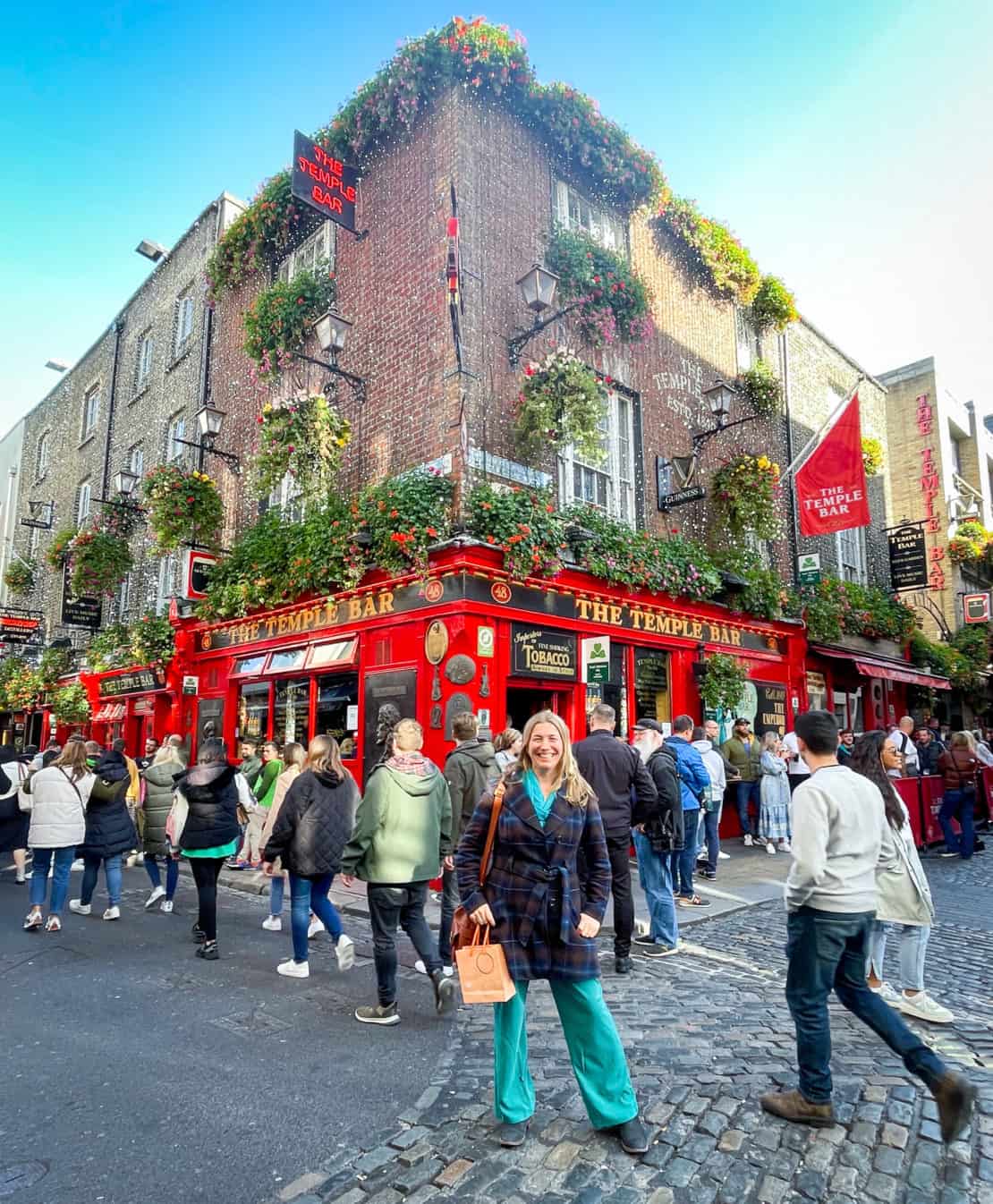
Nightlife: It has to be Temple Bar
The Temple Bar area is the place to be as night descends over the city. Find a good pub for a hearty portion of Irish stew and wash it down with either Guinness or Irish whisky.
You’ll hear live music almost everywhere and the atmosphere can only be described as… enthusiastic. You will immediately spot the Temple Bar with its iconic red exterior, but it tends to get crowded, and many tourists see it as overpriced, so I’d advise heading to another pub.
Where to Eat on Your First Day in Dublin
Some recommendations for you…
Lunch
Lincoln’s Inn
According to local legend, James Joyce saw his future wife, Nora, for the first time at Lincoln’s Inn on June 10, 1904, six days before they had their first date.
He would sit at a table at the Lincoln’s Inn and wait for her to leave Finn’s Hotel where she worked as a chambermaid. The place is a 19th-century building imbued with history and serving great food. Although no one can say what Joyce would have ordered, the traditional Irish stew or the pie of the house are two traditional Irish staples.
Dinner
Stop to dine in the Temple Bar area, where you can not only enjoy some warm and tasty Irish dishes but have a pint of Guinness and listen to local musicians performing. There are plenty of pubs and restaurants in the district, but here are two that people talk about the most:
The Porterhouse
Although part of a chain, this pub has a great local atmosphere and serves original house beers. It was Dublin’s first pub brewery when it was opened in 1996. As you enter, you will be welcomed into a quite crowded place with a band playing in the back, but it stays a bit more laid-back than the ultra-famous Temple Bar. The menu sticks to simple traditional Irish food, which is delicious enough without any fancy additions.
The Oliver St. John Gogarty
If you are looking for a young vibe, you will find it at The Oliver St. John Gogarty since this pub houses a hostel upstairs. Try a burger or a hearty Irish soup, listen to live Irish music, and try a cocktail or a cold beer.
For a more refined dining experience, check out the recommendations at the end of the article.
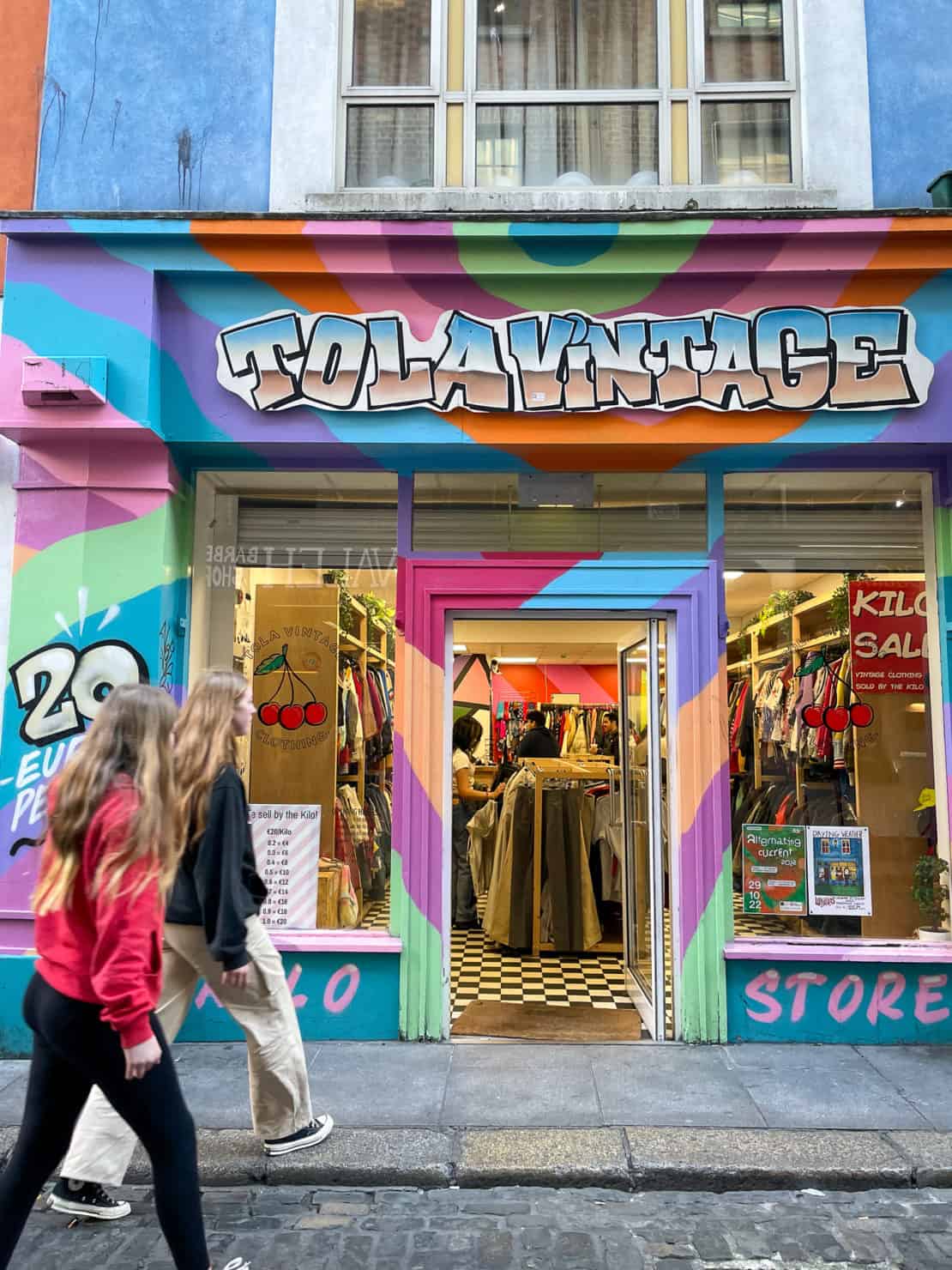
Dublin Itinerary Day 2
On your second day in Dublin, start your itinerary on Dame Street where you can grab breakfast and coffee before heading further afield.
Christ Church Cathedral
For over 1,000 years, people have been coming to Christ Church Cathedral, an imposing mass of stone in the city. Beneath the ground, there’s a 12th-century crypt, one of the largest in Ireland and Britain, which houses artefacts and manuscripts that span the ages.
In particular, look for the royal silver plate that King William III donated to the church in 1697 after winning the battle of Boyne.
Tours are available if you want to find out more about the place’s history. Otherwise, you can just pay the place a briefer visit instead.
St Patrick’s Cathedral
A short walk from Christ Church Cathedral, you will see the tower of St Patrick’s Cathedral reaching for the sky. This beautiful gothic building has over 800 years of history but was rebuilt in part in the 19th century when it was in such a poor state, its collapse was just a matter of time.
This is the Irish national cathedral, where all important services are held. You can tour it with a guide for free – just ask at the desk when the next tour begins and wait for someone to pick you up from there.
Inside the building, you’ll find stunning stained-glass windows and marble statues, as well as a crypt with 700 tombs. Look out for Jonathan Swift’s; the author of ‘Gulliver’s Travels’ was also the dean of St Patrick’s Cathedral.
But most important of all: this was the place where St Patrick himself baptised Christians over 1500 years ago.
Optional: Marsh’s Library
Take a moment to visit one of Ireland’s oldest libraries, right next to St Patrick’s Cathedral. This is one of my favourite places in the whole of Dublin, its shelves containing tomes from the 15th century, with pages showing bullet damage from the 1916 Easter Rising.
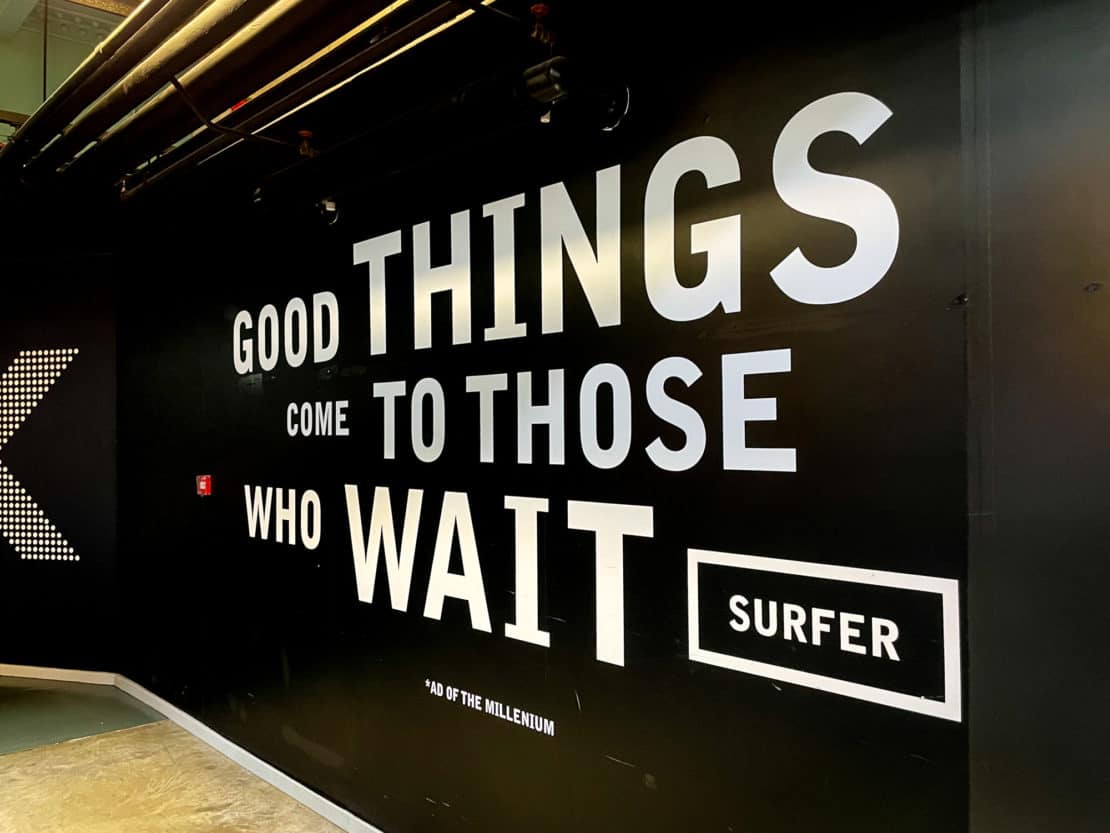
Guinness Storehouse
And now to Dublin’s most famous attraction!
The Guinness Storehouse is no longer a working factory but a place of learning and entertainment, almost like a seven storey mall. Not only will you learn about the beer, but you’ll also cover the history of Dublin and the history of advertising as the story of Guinness is the story of those themes as well.
On the very top of the building, sip your pint of the black stuff at the Gravity Bar, gazing out to the Wicklow Mountains on one side and Phoenix Park on the other. If you feel a bit hungry, you can grab a bite at one of the restaurants within the storehouse. And the gift shop can furnish you with more Guinness souvenirs than you could ever begin to imagine.
Optional: Irish Museum of Modern Art
Stop by the Irish Museum of Modern Art and stroll around the thousands of paintings set in the former 17th century Kilmainham Hospital. If the weather’s good, enjoy the IMMA’s gardens and café and listen out for the latest gossip in the art world.
Kilmainham Gaol
Kilmainham Goal was once a place of torture and executions, where personalities like Charles Parnell, Robert Emmet, Eamon de Valera, and the leaders of the 1916 Easter Rising were incarcerated, next to petty thieves.
It’s a tough place to visit but it does shed light on an important part of Irish history. You can only visit with a guide and you’ll be taken to the interior yard where the inmates spent their very short time outdoors, as well as the cells and the small chapel.
Optional: Phoenix Park
If the weather is in a good mood, it may be a good idea to take a stroll around Phoenix Park, the largest enclosed park in Europe. Highlights include the Phoenix Monument, the Papal Cross, and the Wellington Testimonial, but the area itself is beautiful and provides a natural tonic to the horrors of Kilmainham Gaol.
Optional: the Design District or Creative Quarter
If reliving bad history is something you’d rather avoid, travel instead to the city centre to Dublin’s gorgeous Design District or Creative Quarter. Amid vintage clothes and vegan restaurants, you can find hand made jewellery and Irish gorse bush scented candles. I always try to pay the place a visit each time I’m in town – I love surrounding myself with the work of local artists and a sense of energy and creativity for the future.
The Powerscourt Townhouse is also a fun place for lunch, surrounded by a sense of air and space. And the aptly named Irish Design Shop is a great place to start finding out about local creatives and stocking up on gorgeous souvenirs that people will actually want to receive.
Where to Eat on Your Second Day in Dublin
Some recommendations for your second day in Dublin…
Lunch: Two Pups Coffee
Right by St Patrick’s Cathedral, you can stop at this lovely café for both breakfast and lunch. Two Pups has a nice atmosphere and serves some of the greatest coffees in town. To save time, you could also have lunch at the Guinness Storehouse, but expect the prices to be higher and the queues longer.
Dinner: Brazen Head
End the second day dining at a historic landmark in Dublin city centre? The Brazen Head on Bridge Street is one of Ireland’s oldest pubs (or maybe the oldest of all), opening in 1198 and functioning as an inn since 1754. (Note, this is not the only place in Dublin to claim to be the oldest pub!)
You’ll hear live music every evening and find hearty portions of Guinness stew and shepherd’s pie. Shiny and futuristic, it is not. But for cosiness and character, it’s hard to beat.
When Is the Best Time to Visit Dublin?
The weather in Ireland is notoriously unreliable. So, while it makes sense to aim for sunshine between June and August, the truth is that good weather is promised to no one. So, forget the weather, and prepare for every eventuality. Pack layers, sweaters, raincoats and umbrellas – and sunscreen. Because Dublin is fun to visit all year round.
That said, temperatures are less biting in the summer but it will be slightly more crowded.
Dublin has a range of fun festivals like Bloomsday on 16th June, when Joyce fans trace Bloom’s steps around the city and read aloud from the novel.
If you are planning to visit for St Patrick’s Day, you will catch the parades and other festivities. But bear in mind that it will be harder to find a hotel room so book well in advance.
Where to Stay in Dublin
If you want to explore most places on foot, it’s best to choose a hotel right in the middle of the city. This way, you can immediately start your itinerary in the morning without needing to wait for the bus or sitting in rush hour traffic in a taxi.
Here are some recommended places to stay in Dublin:
The Westbury: located between Trinity College and St Stephen’s Green. This luxurious complex offers spacious rooms with beautiful balconies where you can have a look at Grafton Street while enjoying breakfast. The restaurant downstairs is one of the best in the city, so you can have dinner here if you feel like you are too tired for getting out again.
The Morgan Hotel: located in the Temple Bar area, this is a good choice if you know you will be partying hard, as you can stagger home in a matter of minutes. It is a lovely hotel with polite staff and spacious rooms that keeps you close to the main attractions, so you can have an early start every day. Try their restaurant for a delicious breakfast or grab a snack in the evening before venturing to the streets again.
Alternative Things to do in Dublin in Two Days
So, the two day itinerary for Dublin above tackled the classic sites for first timers. Now, some favourites of mine for a second or third trip to Dublin. Or for trips that last longer than two days.
The Leprechaun Museum
Cheesy? Tacky? Yes, that’s what I thought at first, too. But while you will find a spirit of kitsch, the Leprechaun Museum spends most of its time talking about the traditions and folklore of oral storytelling in Ireland.
From an immersive recreation of a leprechaun’s home to a gallery of leprechaun art, the Leprechaun Museum is a fun way to spend an hour or so. And you’ll never look at leprechauns the same way again.
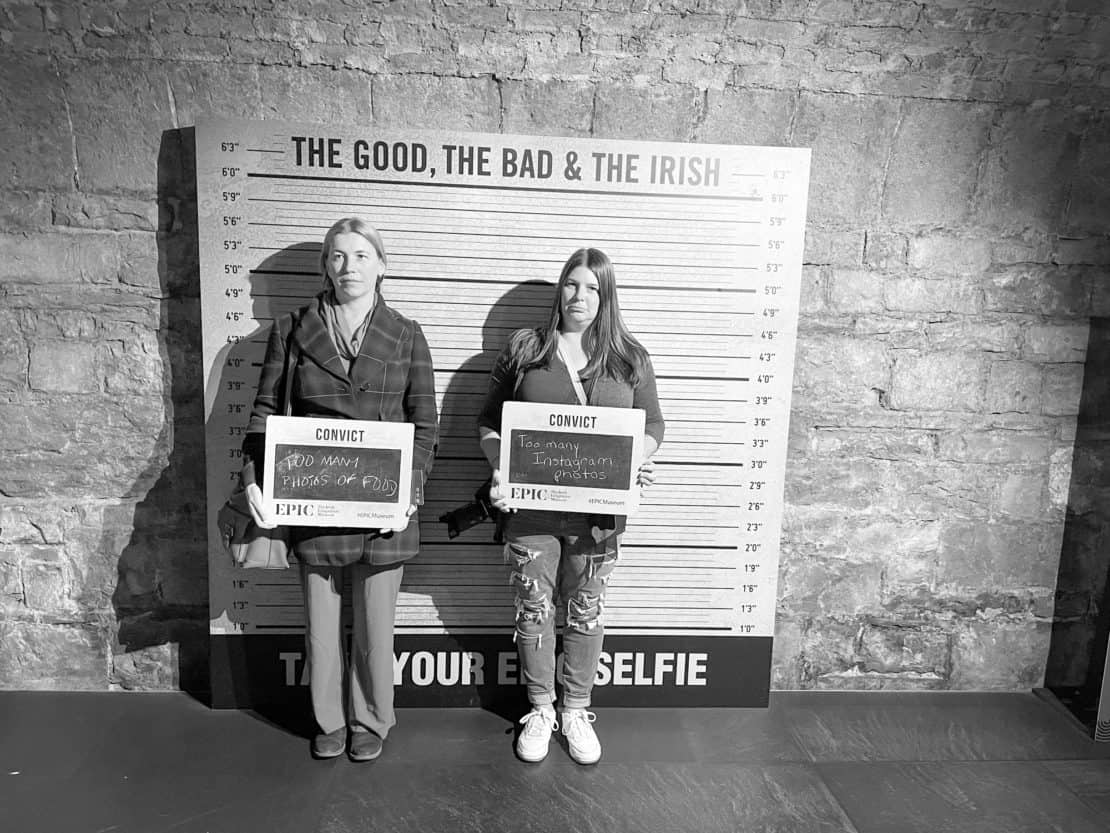
EPIC: The Irish Emigration Museum
The Irish Emigration Museum in Dublin is a fascinating and educational experience. Located right by the river and the replica Jeanie Johnston “coffin ship,” this museum is dedicated to sharing the stories of Irish people who left their homeland in response to a wide range of events.
Through interactive displays, artefacts, photographs, and videos, visitors can learn about the struggles, successes, and stories of those who left.
The museum also offers programmes and events to further explore the history and culture of Irish emigration. Whether you are looking for a deeper understanding of the topic or just passing through, the Irish Emigration Museum in Dublin is a thought provoking, sometimes cheeky, celebration and investigation of Irish history.
- Inside tip: tickets are cheaper if you buy them online and that includes from your phone while in the queue.
Roe & Co Distillery and Cocktail Class
Situated in the iconic St. James’ Gate, Roe & Co became a symbol of Dublin’s whiskey-making heritage in 1867. Today, the Roe & Co Distillery is a modern and innovative place, offering visitors an experience that blends the old with the new.
You can take a cocktail class, tour the distillery, visit the whiskey museum and walk through the old warehouses before arriving in the surprisingly stylish gift shop.
Dine inside a former bank
Make a special occasion of lunch or dinner by dining inside the Bank on College Green. It’s a chance to taste Victorian splendour beneath the panelled ceiling and flamboyant sculptures.

